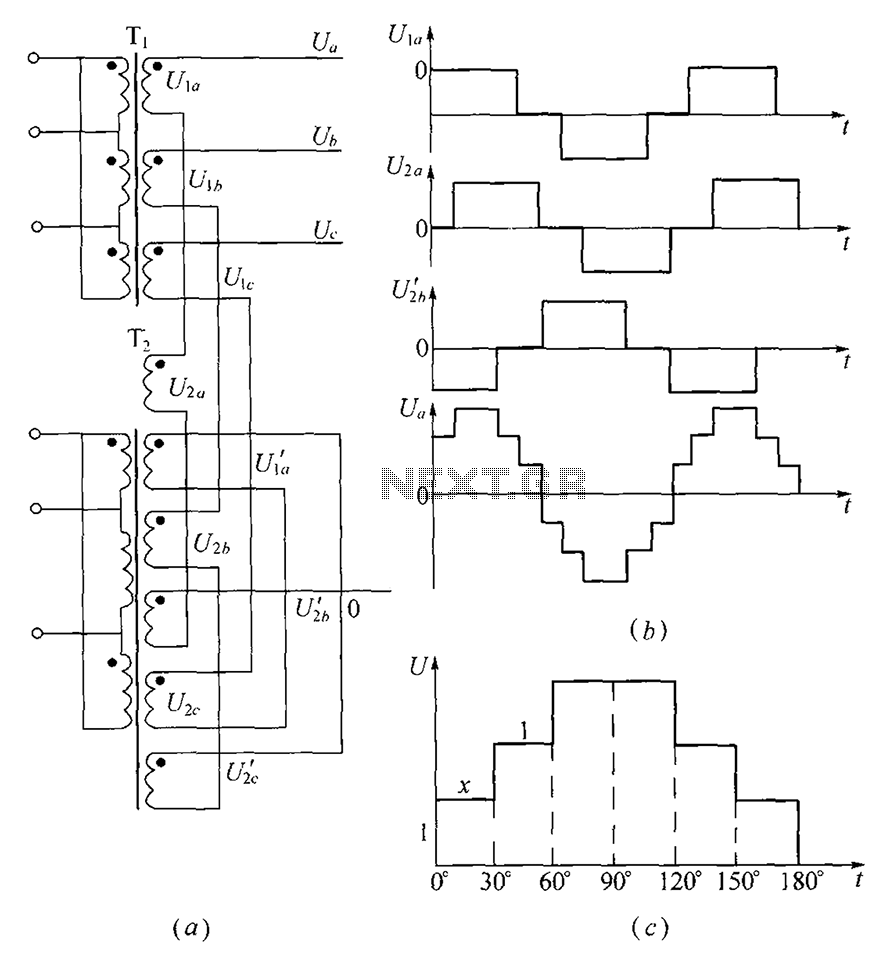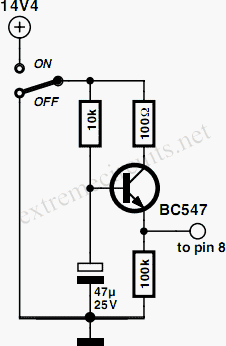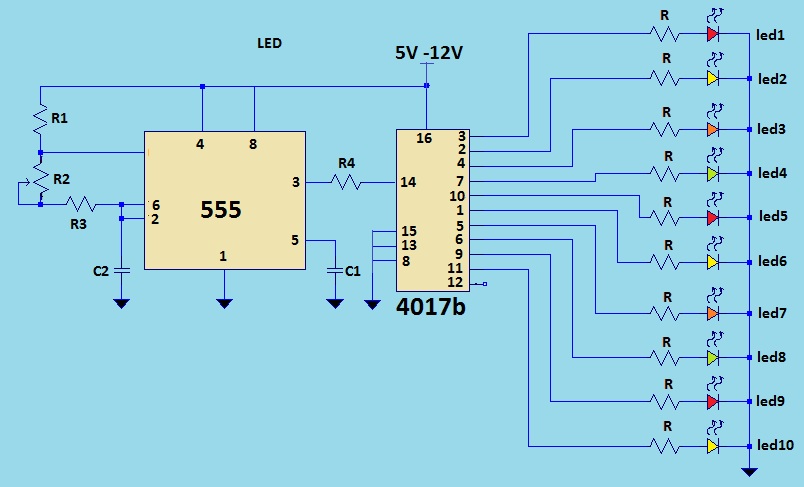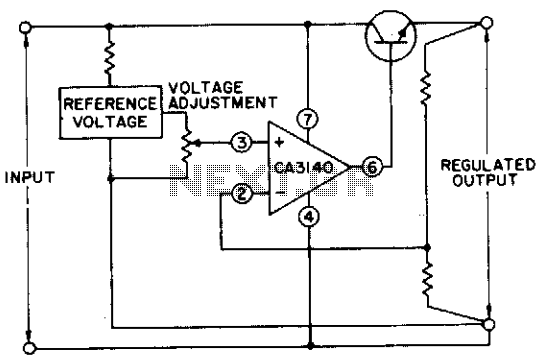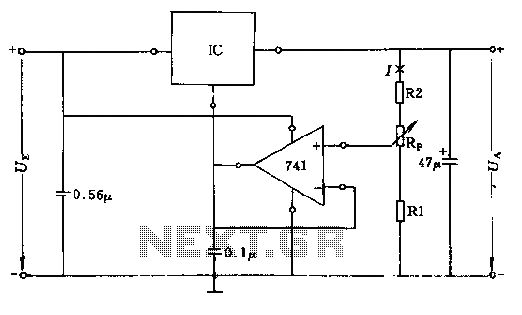
5V 1A Step Down Switching Regulator using LM2524D and Datasheet
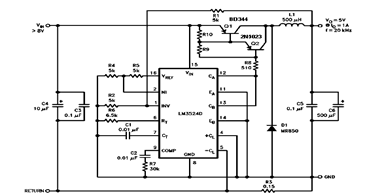
The schematic diagram below illustrates a 5V/1A Step-Down Switching Regulator utilizing the LM2524D Regulating Pulse Width Modulator (PWM). Additional parameters, PC board layout, stuffing diagram, and more information can be found in the LM2524D datasheet.
The circuit design features the LM2524D, a highly efficient PWM controller designed for step-down (buck) voltage regulation. This device is capable of converting a higher input voltage into a stable 5V output with a maximum current of 1A. The LM2524D operates by modulating the duty cycle of the output signal, which effectively controls the output voltage.
Key components of the schematic include input capacitors to filter the input voltage and ensure stable operation, an inductor that stores energy during the switching cycle, and output capacitors that smooth the output voltage. The feedback loop, formed by a resistor divider network, monitors the output voltage and adjusts the PWM signal accordingly to maintain the desired output level.
The layout of the PCB is critical for minimizing electromagnetic interference (EMI) and ensuring efficient operation. Proper placement of components, particularly the inductor and capacitors, is essential to reduce parasitic inductance and resistance. The stuffing diagram provides guidance on the assembly of the circuit, indicating the order and orientation of each component.
In summary, this step-down switching regulator circuit utilizing the LM2524D is designed to provide a reliable 5V output at 1A with efficiency and stability, making it suitable for various applications in power management systems. For detailed specifications and performance characteristics, consulting the LM2524D datasheet is recommended.The schematic diagram below circuits 5V/1A Step-Down Switching Regulator using LM2524D Regulating Pulse Width Modulator (PWM). You may see the parameters, PC board layout, stuffing diagram and more in the LM2524D datasheet 🔗 External reference
The circuit design features the LM2524D, a highly efficient PWM controller designed for step-down (buck) voltage regulation. This device is capable of converting a higher input voltage into a stable 5V output with a maximum current of 1A. The LM2524D operates by modulating the duty cycle of the output signal, which effectively controls the output voltage.
Key components of the schematic include input capacitors to filter the input voltage and ensure stable operation, an inductor that stores energy during the switching cycle, and output capacitors that smooth the output voltage. The feedback loop, formed by a resistor divider network, monitors the output voltage and adjusts the PWM signal accordingly to maintain the desired output level.
The layout of the PCB is critical for minimizing electromagnetic interference (EMI) and ensuring efficient operation. Proper placement of components, particularly the inductor and capacitors, is essential to reduce parasitic inductance and resistance. The stuffing diagram provides guidance on the assembly of the circuit, indicating the order and orientation of each component.
In summary, this step-down switching regulator circuit utilizing the LM2524D is designed to provide a reliable 5V output at 1A with efficiency and stability, making it suitable for various applications in power management systems. For detailed specifications and performance characteristics, consulting the LM2524D datasheet is recommended.The schematic diagram below circuits 5V/1A Step-Down Switching Regulator using LM2524D Regulating Pulse Width Modulator (PWM). You may see the parameters, PC board layout, stuffing diagram and more in the LM2524D datasheet 🔗 External reference
